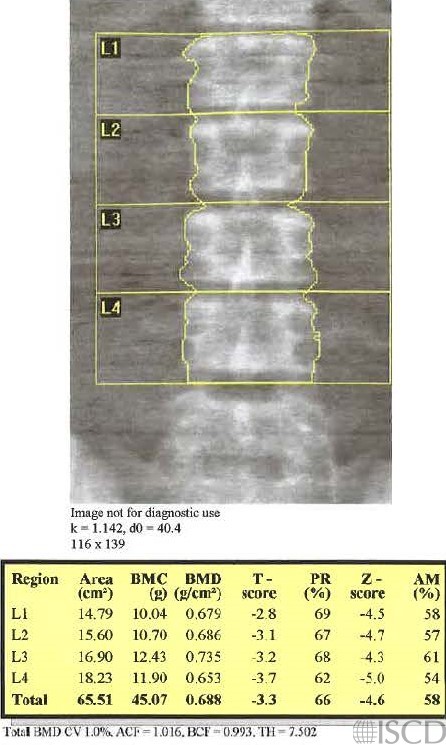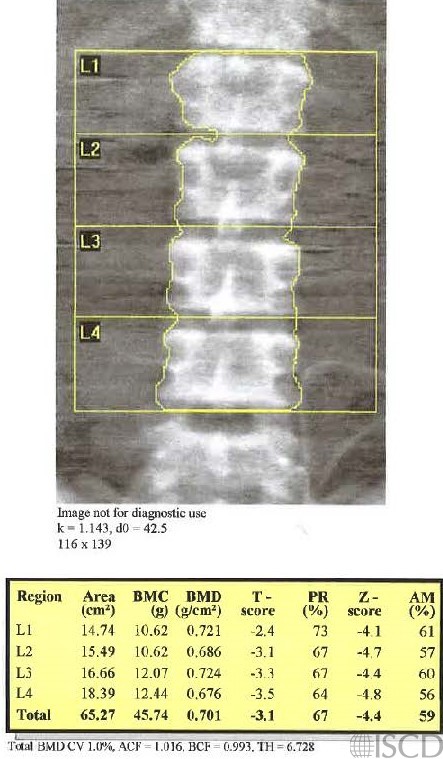Ascites and Indwelling Peritoneal Dialysate
Peritoneal dialysate is present in this Hologic spine image.

This is the same patient scanned without the presence of peritoneal dialysate.

The left panel shows a Hologic lumbar spine DXA with indwelling dialysate and the right-hand panel shows the same patient after the dialysate was drained. Notice that the spine BMD increases after the dialysate is drained. The TH, or thickness value, also decreases after the dialysate is drained.
Ascites and indwelling peritoneal dialysate may not produce a visual artifact on a DXA scan. It is important that a DXA technologist interview the patient and ask questions about the possible presence of ascites and peritoneal dialysate. The presence of indwelling peritoneal dialysate has been found to significantly lower spine BMD, and it is recommended that patients should be scanned without indwelling dialysate (Mann et al.). The presence of ascites generally decreases BMD At the lumbar spine (Guanabens et al. and Labio et al.). The precision of a bone density measurement would be affected if a patient is scanned at one time with dialysate or ascites and the next time without dialysate or the presence of ascites.
Sarah L Morgan, MD, RD, CCD, The University of Alabama at Birmingham
• Mann, M.L., et al., The effect of peritoneal dialysate on DXA bone densitometry results in patients with end-stage renal disease. J Clin Densitom, 2008. 11(4): p. 532-6.
• Guanabens, N., et al., Patients with cirrhosis and ascites have false values of bone density: implications for the diagnosis of osteoporosis. Osteoporos Int, 2012. 23(4): p. 1481-7.
• Labio, E.D., et al., Effect of ascites on bone density measurement in cirrhosis. J Clin Densitom, 2007. 10(4): p. 391-4.